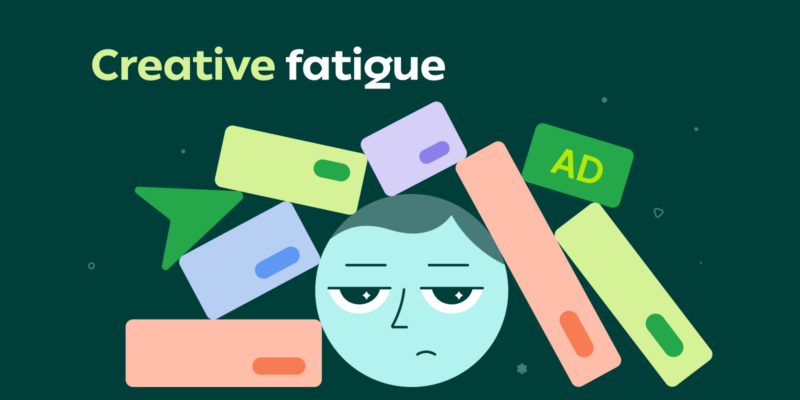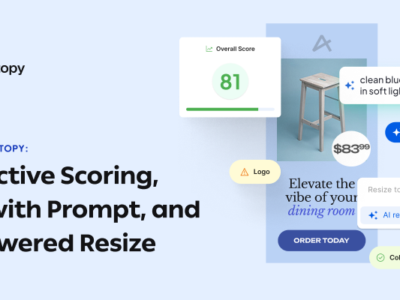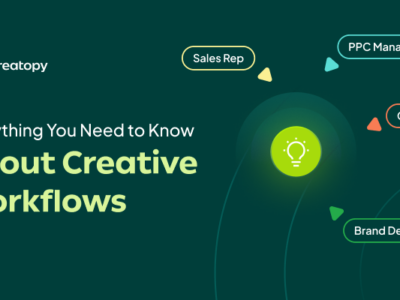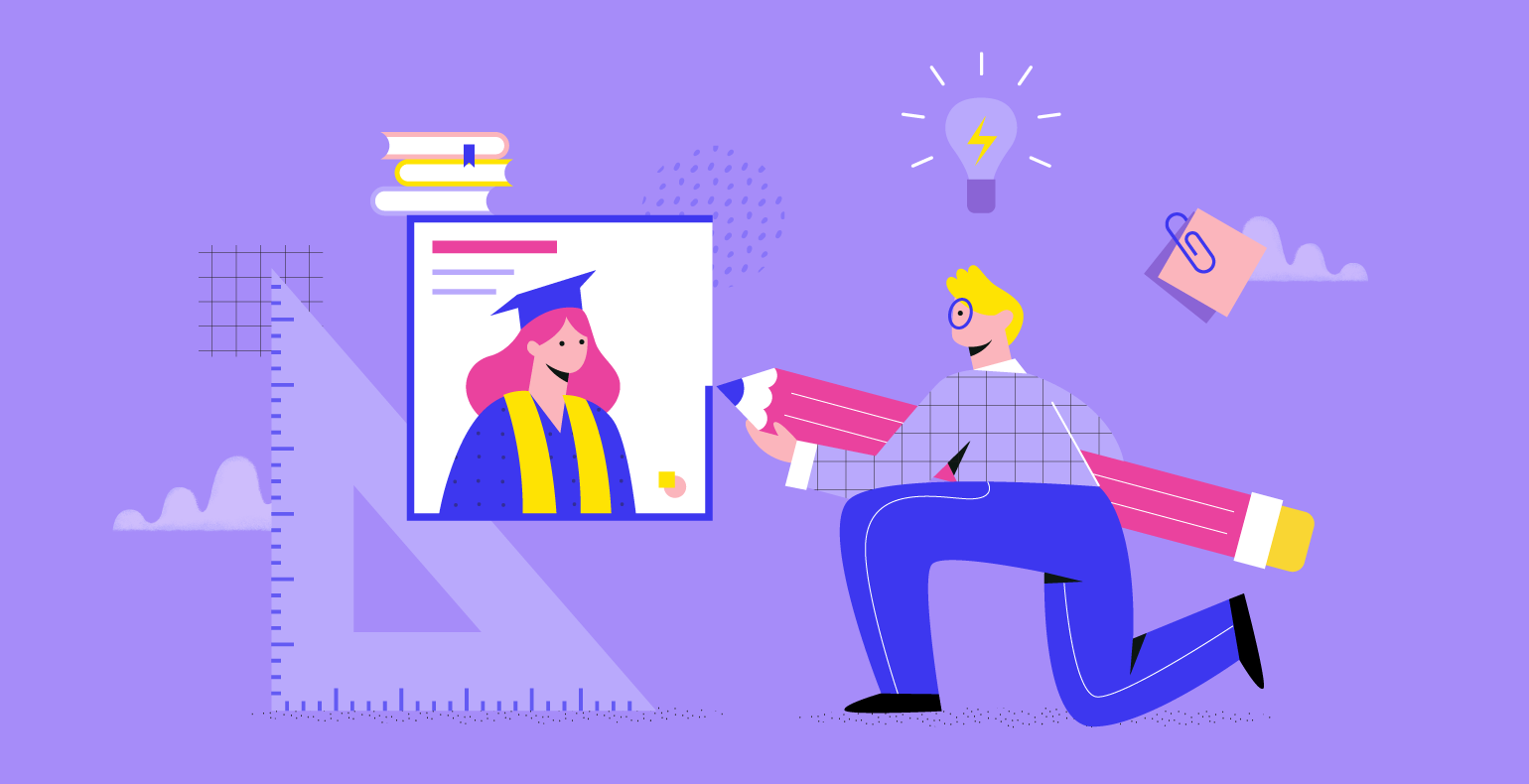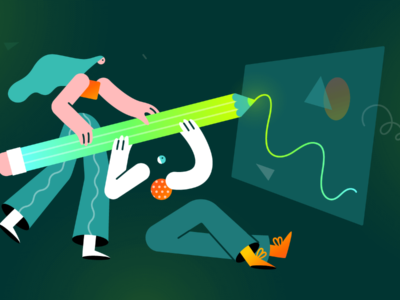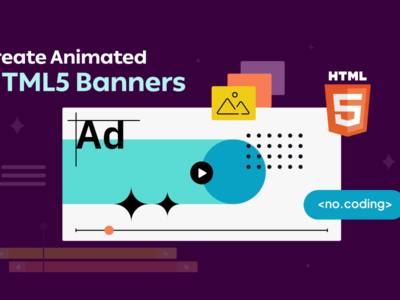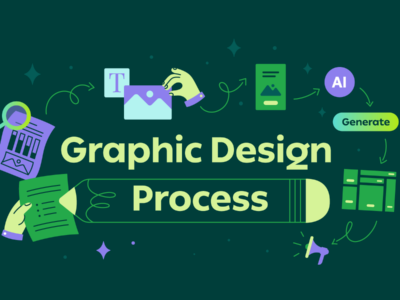As you’re scrolling or swiping on your favorite social media platform, you will inevitably find yourself saying at times, “I’m so tired of seeing this ad!”. And that may make you annoyed, while your mind will do everything it can to avoid seeing ads from that brand, which can lead to banner blindness.
Imagine that your audience may feel the same way when they’re exposed to the same ads over and over again.
This is what it’s like to experience creative fatigue, the nemesis of effective ad campaigns.
Our role as marketers is to serve up a steady stream of fresh, high-quality, and targeted ads. The last thing we want is for our content to go from engaging and interesting to downright frustrating.
In this article, we’ll unravel the concepts of creative fatigue and ad fatigue—what’s the definition, the telltale signs, and, most importantly, how to shake things up and keep your audience engaged.
Ready to dive in and break the cycle? Let’s go.
A. What Is Creative Fatigue?
Creative fatigue is the gradual diminishing of an ad’s effectiveness due to excessive exposure. When an audience is repeatedly bombarded with the same messaging and imagery, they develop a sense of apathy, rendering your carefully crafted ads ineffective.
This phenomenon is similar to constantly hearing the same joke or seeing the same meme; the novelty wears off, and the impact diminishes.
B. Creative Fatigue vs. Ad Fatigue
There’s a slight difference between these two terms.
Ad fatigue can be defined as the situation when users see ads from a certain brand so much that they stop paying attention. In contrast, creative fatigue refers to ineffectiveness that can occur when the audience is being exposed to the same creative.
Simply put, ad fatigue is when viewers become desensitized to a particular brand’s advertising, while creative fatigue arises when an audience starts tuning out repetitive ads, regardless of the brand.
C. How to Identify Creative Fatigue
When navigating the realm of digital campaign effectiveness, there’s a sneaky culprit that tends to fly under the radar: creative burnout.
Every ad has its expiration date — the point at which people start tuning out because they’ve seen it one too many times. Despite the obviousness of this reality, it’s a detail that frequently gets brushed aside.
Crafting a winning campaign requires a keen understanding of how to identify creative burnout in order to be addressed when it rears its head.

1. Lower CTR
Keeping an eye on your click-through rates (CTRs) is vital for monitoring and addressing ad fatigue. CTRs gauge the effectiveness of your ad and its ability to entice visitors to explore your brand further. For instance, if your ad promotes a 10% discount on your new winter outwear line and boasts a high CTR, it suggests that the ad is successfully compelling visitors to check out your discounted products.
A significant decline in CTRs over time may indicate that your audience is losing interest and your brand is failing to captivate their attention.
2. Diminished engagement
Beyond CTRs, assessing how your followers interact with your business on social media is crucial. If people merely glance at your ads and move on without engagement, it signals a lack of genuine interest. Social engagement, including comments and shares, is pivotal for a connected audience. Reduced social interaction could be a sign that ad fatigue has set in, making your followers less motivated to engage with all your content, be it paid or organic.
3. Underperforming KPIs
When a campaign is delivering a higher cost per click (CPC), cost per acquisition (CPA), or another high cost per action metric, you may be contending with advertising fatigue. High costs per action are an indication that your audience may be scrolling past your ads without engaging with them. As a result, you’re running campaigns that don’t result in the desired action.
4. Reduced impressions
Social media algorithms prioritize the most relevant content, including paid advertisements. If users aren’t engaging with your paid posts, the likelihood of them appearing in the future diminishes. A decline in impressions over time indicates that it might be time to refresh and revitalize your ad campaigns.
D. What Facebook Recommends in Terms of Creative Fatigue
Creative fatigue emerges when an audience encounters the same creative content excessively. This can diminish the likelihood of audience engagement with your advertisement, potentially resulting in a higher cost per result. Meta Ads Manager’s assistance spans both pre and post-campaign phases, aiming to help you address issues related to creative fatigue.
How Facebook detects it:
- Prior to campaign activation. If they anticipate creative fatigue within the initial seven days of your campaign, they will provide a warning before you publish your ad.
- During active campaigns. If they observe that your audience has been exposed to the same ad excessively, you will notice either “Creative limited” or “Creative fatigue” in the Delivery column status for your ad set or ad. They take into account recent exposures of the ad’s image or video, including those from other campaigns associated with your page. Additionally, they consider your ad’s cost per result. A “Creative limited” status is assigned when the cost per result is higher than your previous ads but less than twice as much. On the other hand, a “Creative fatigue” status is assigned when the cost per result is equal to or greater than twice as much as your past ads.
Potential recommendations for addressing creative fatigue
Here are a few suggestions that you can implement before or after your campaign goes live:
- Create a new ad. Develop a fresh ad featuring a new image or video that significantly differs from the original creative. You can also keep your original ad active, as opposed to pausing or turning it off, as it can help maximize results.
- Expand your audience. Increase the size of your audience to reach new individuals who have not encountered your ad excessively.
- Try Meta Advantage+ creative. Advantage+ creative automatically generates variations of your ad using a single image or video, tailoring each ad to individual preferences. Please note that Advantage+ creative is exclusively available for campaigns utilizing the Traffic or Conversions objectives with a website destination.
E. How to Overcome Creative Fatigue
1. Diversify your creative assets

Prior to launching your campaigns, develop multiple variations of your creative assets to rotate throughout the campaign duration. Consider incorporating personalization elements to tailor ads for different audience segments.
Variances in color, copy, and call-to-action (CTA) will keep users engaged, providing valuable insights for optimizing based on the most effective creatives. This approach enables seamless transitions between creatives, allowing for adjustments based on seasonality or specific events you aim to target.
2. Establish appropriate frequency caps

A key signal of ad fatigue lies in the frequency with which users encounter an ad. To address this, consider implementing frequency caps within your campaigns. This feature empowers you to adjust the number of times a specific user sees your ad. During campaign setup, configure frequency caps to guarantee that your ads reach unique users within your target audience pools.
3. Optimize campaigns

To prevent ad fatigue from impacting your campaigns, it’s crucial to regularly monitor their performance and make necessary adjustments. The key metrics to focus on are CTR and cost-per-action metrics such as CPC and CPA. By keeping a watchful eye on these metrics, you can pinpoint areas that need improvement, ensuring the success of your paid media initiatives and maintaining engagement with your audiences through your ads.
4. A/B test

A/B testing can be a valuable strategy for avoiding creative fatigue in advertising campaigns. Here are several reasons why A/B testing is a good idea to prevent it:
- Variety keeps audiences engaged. A/B testing involves creating variations of your ad by changing elements such as visuals, copy, or calls-to-action and testing them against each other to identify the most effective combination. By avoiding monotony, you reduce the risk of audiences tuning out because they’ve seen the same ad too often.
- Identifying high-performing elements. Through A/B testing, you can pinpoint which specific elements of your ad resonate most with your audience. This includes understanding the impact of different visuals, messaging, or other creative components. By identifying high-performing elements, you can tailor your future campaigns to emphasize what works best and avoid what may contribute to creative fatigue.
- Adapting to changing trends and seasons. Preferences and trends evolve over time, and what works well in one season or period may become less effective over time. A/B testing enables you to adapt your creatives to changing trends, seasons, or market dynamics. This flexibility helps you avoid creative fatigue by ensuring your ads remain relevant and appealing.
- Continuous improvement. A/B testing is an iterative process that encourages continuous improvement. By consistently testing and refining your creative elements, you can stay ahead of potential advertising fatigue effects. This ongoing optimization allows you to respond dynamically to changes in audience behavior and preferences.
5. Try different background colors

Rather than altering your entire creative, consider a change in the background color. Sticking to the same color in every creative may lead to banner blindness.
A little change of scenery can work wonders.
Seeing the same images repeatedly can become monotonous, leading us to overlook ads when they reappear.
Display ads are especially prone to ad fatigue, given that the same audience is exposed to the same ad multiple times.
Thankfully, there’s a straightforward solution to break this cycle: by updating the background color of your ads, you can rekindle your audience’s interest in your content. This subtle adjustment often suffices to make your advertisements feel like a breath of fresh air.
F. Beat Creative Fatigue With Creative Automation
Let’s face it – tackling creative fatigue is no walk in the park.
While most ad platforms provide native solutions to address this challenge, the initial hurdle lies in generating the creatives. And as your campaigns expand, so does the predicament.
Consider this: an advertiser with a monthly spend of $50k requires ten times more creatives than one spending $5k. Why? Larger budgets lead to a broader reach, resulting in quicker ad saturation and the onset of fatigue.
The traditional approach of churning out 20 new creatives every few days to replace a high-performing one is neither sustainable nor cost-effective.
But what if you could prevent creative fatigue altogether?
Enter creative automation.
For those who lack the resources to produce creatives at scale, it’s the perfect solution.
According to Hubspot, marketers who are successful in their efforts are 46% more likely to use automation compared to those with ineffective strategies.
That’s mainly because, thanks to creative automation, marketing teams can tap into creative variety and meet their customers wherever they are.
But there’s more to it than that. Let’s break down the benefits:
1. Ensure faster production
Creative automation enables marketers to expedite campaign preparation, a critical advantage during tight deadlines, high demand, limited resources, or the need to respond promptly to market events or adapt to new contexts.
Even with a singular campaign, incorporating diverse creatives to captivate the target audience with the optimal blend of imagery and messaging is essential. Instead of investing excessive time in manually crafting numerous design iterations, using a platform such as Creatopy allows for accelerated ad production.
2. Maintain brand consistency
Ensuring brand consistency is essential for fostering trust and promoting recognition, aligning your materials with your brand identity. This becomes even more crucial when creating campaigns spanning diverse markets or channels.
With Creatopy’s integrated automation features, maintaining this coherence is achievable without the need for repetitive tasks. The materials can undergo minor adjustments in size, format, text, and language effortlessly. Additionally, your team can bypass the manual effort of individually modifying each element for every asset.
3. Scale your work
As you contemplate navigating a busy period like the one before the holidays without resorting to overtime or hiring additional staff, the logical approach is to leverage creative automation for those repetitive tasks that consume a significant portion of your team’s time. This allows you to efficiently handle the workload and meet campaign deadlines without expanding your workforce.
Nearly all creative automation tools, including Creatopy, offer resizing functionalities that enable the instant multiplication of ad designs. Your team only needs to create one or a few master designs, which can then be resized to fit various dimensions, covering all platforms in your advertising strategy.
When significant modifications are required, the ability to bulk edit all creatives proves invaluable, saving both time and resources for your team.
4. Personalize campaigns
In the course of running campaigns, you likely aim to connect with diverse buyer personas, each possessing unique characteristics and interests. Tailoring your messaging accordingly is crucial to effectively engage each target audience.
Consider, for instance, the need to address both teenagers and middle-aged people. Maintaining distinct and relevant messaging is essential to appeal to both demographic segments successfully.
Furthermore, when executing localized campaigns, it becomes imperative to deliver personalized ad experiences. One approach involves straightforward translation and replacement of text in the ads while retaining the integrity of other elements. Alternatively, dynamic ads offer the flexibility to adapt their content based on the viewers’ location.
Final Thoughts
As you’ve probably experienced yourself, even the most creative and engaging ads can lose their allure over time, especially when you’re exposed to them over and over again.
Avoiding ad fatigue is most effectively achieved through a proactive approach. Keep a watchful eye on your campaigns, emphasizing frequency and CTR monitoring. This ensures that your strategy remains optimized for peak performance, guiding you toward your ROI goals.
Want to beat creative fatigue starting today? Start your free trial in Creatopy.

